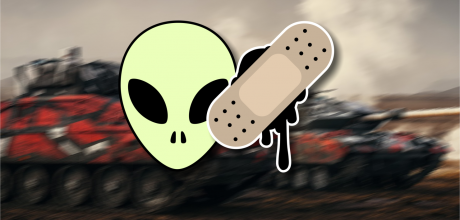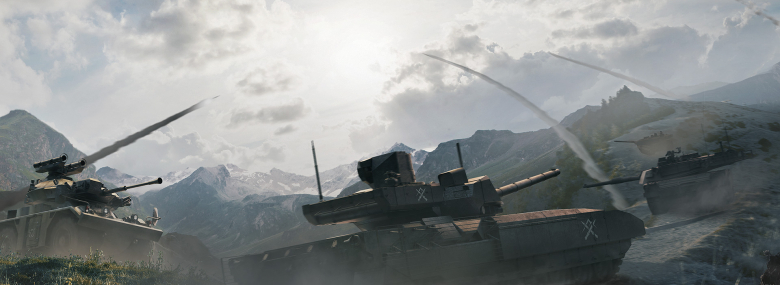
Commanders!
We are happy to introduce the first Japanese vehicle of Armored Warfare – the Type 90 Main Battle Tank!
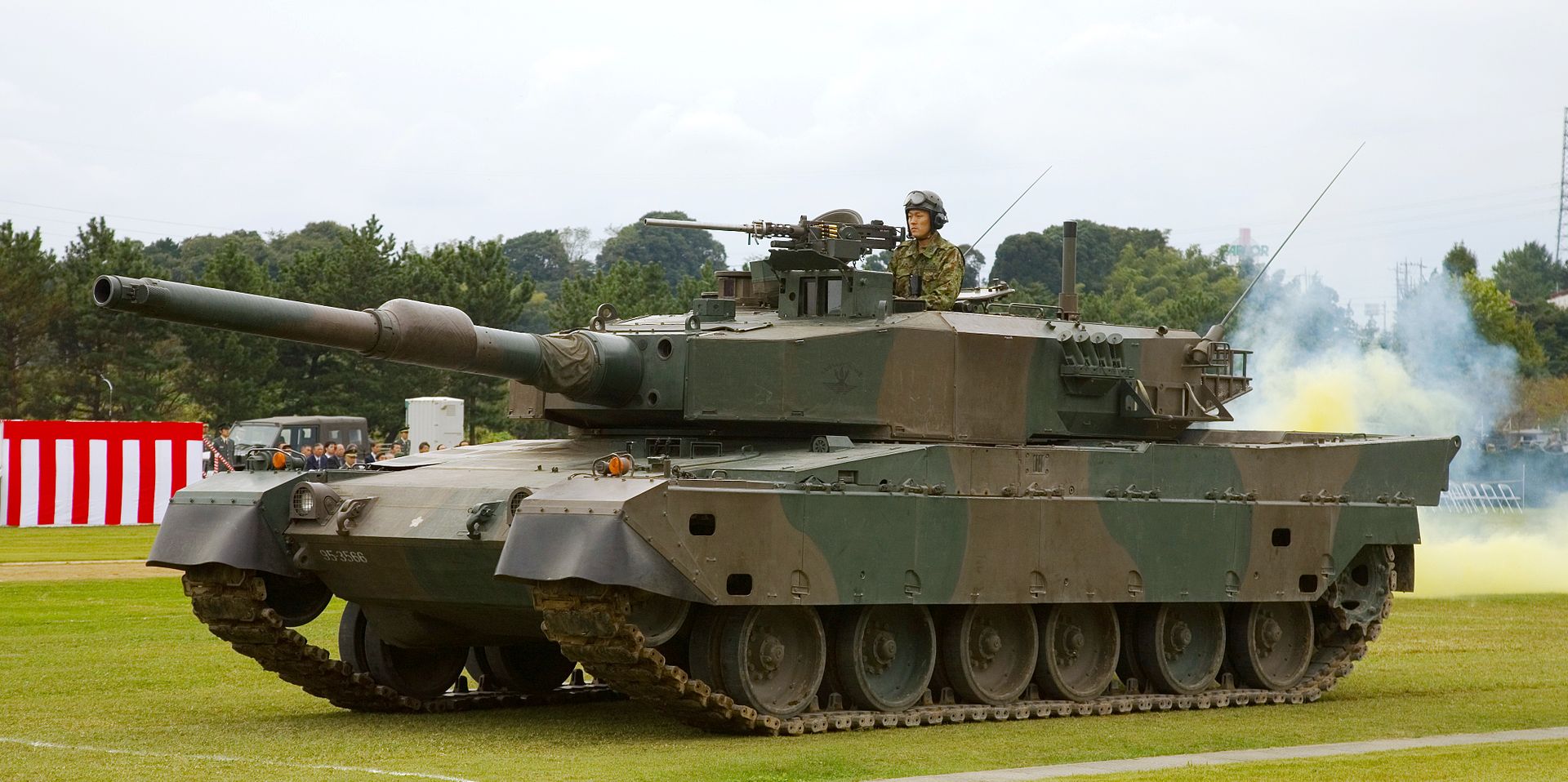
The development of the tank started in 1976 as a part of the STC program to build a truly modern tank for the Japanese Self-Defense Forces, although shortly afterwards the development program received a different designation – TK-X.
Not that the mass-produced Japanese service tank of that time, the Type 74 MBT, wasn’t a solid vehicle considering the time it was designed in (the early 1960s). But the appearance of modern Soviet tanks such as the T-64, T-64A and the T-72 made it quickly obsolete and by the end of the 1970s, when it appeared in any meaningful numbers, it was outdated. With its steel armor and a 105mm gun, it was roughly on par with the M60 series or the Leopard 1, but its steel armor and 105mm gun just wouldn’t cut it against the rapidly evolving designs of the Soviet Union. The Japanese themselves realized that something better was needed – and that something was the Type 90.
All post-war Japanese tanks were designed with defense in mind and this tank would be no exception. Since its 1976 approval, the development process took a few years to pick up steam. One of the important principles for the Japanese was self-reliance – as many components as possible were to not only be produced in Japan, but also designed there. This, of course, would cost not only time, but also a lot of money and, between 1978 and 1980, the Japanese were slowly approving the funding for various tank components, including the gun and the engine.
The general military requirements for the tank itself were issued in 1980. Apart from the abovementioned self-reliance, the tank was to be protected by advanced composite armor and armed with an indigenous 120mm smoothbore gun by Japan Steel Works Ltd. that would fire special Japanese ammunition. This wasn’t a great decision for the vehicle – the development of such a weapon system is notoriously expensive and slow. Nevertheless, the Japanese built two prototypes with this gun between 1982 and 1984 and were thoroughly tested until 1986.
Around that time, with the costs of the program ramping up along with development delays, the Japanese re-evaluated their decision about the gun and decided instead to license-produce the famous Rheinmetall L/44 120mm smoothbore. This was, of course, a cheaper solution and even the self-reliance principle was upheld – the gun would be produced in Japan, after all.
This German-Japanese collaboration would turn out to be much more successful than the one four decades prior. The second batch of four prototypes, built between 1986 and 1988, was already armed with the German cannon and was, again, thoroughly and successfully tested until 1989. The tank was formally accepted in service in 1991 under the designation Type 90.

For its time, the vehicle was perfectly adequate and on par with its American Abrams and German Leopard 2 counterparts. It weighed 50 tons (the weight was limited in order for it to, amongst other things, be able to use standard bridges in Japan), but unlike the other western designs (with the exception of Leclerc), it had a crew of three with the loader being replaced by an automatic loading mechanism.
The armor composition of this vehicle is currently classified, although it is likely to consist of steel with some sort of ceramic inlays. Even though the vehicle turret resembles the Leopard 2 MBT, the armor layout is likely very different and designed completely in Japan. Either way, the tank’s protection levels are on par to the other modern tanks of the early 1990s. The tank’s protection was further enhanced by:
- Laser illumination warning system
- NBC filtering system
- Smoke grenade launchers
Another important aspect of a MBT is its mobility and the Type 90 was not lacking in regard to that. It was powered by a 1.500hp Mitsubishi 10ZG two-stroke water-cooled diesel engine paired with an automatic transmission (4 forward gears, 2 reverse gears) that allowed it to go as fast as 70 km/h forward and 42 km/h in reverse.
Maximum speed, however, is not everything – in the end, agility and the abilities of the suspension play rule the battlefield and that was something the Type 90 truly excelled in thanks to its 30 hp/t power-to-weight ratio and its hydropneumatic suspension that allowed the driver to tilt the vehicle forward and backward (not to the sides).
To understand the importance of this feature for the Japanese, one has to realize that Japan is a mountainous country, making good gun elevation and depression a critically important trait. A tank has to be able to fire both above and below its position with ease and a hydropneumatic suspension with tilting abilities allows the operator to do just that. In this case, the system allowed the tank to change its frontal and rear clearance from 20cm to 60cm. On the other hand, such a system was very expensive, driving the already high production costs higher. This would play a major role in what happened to the vehicle after its introduction.
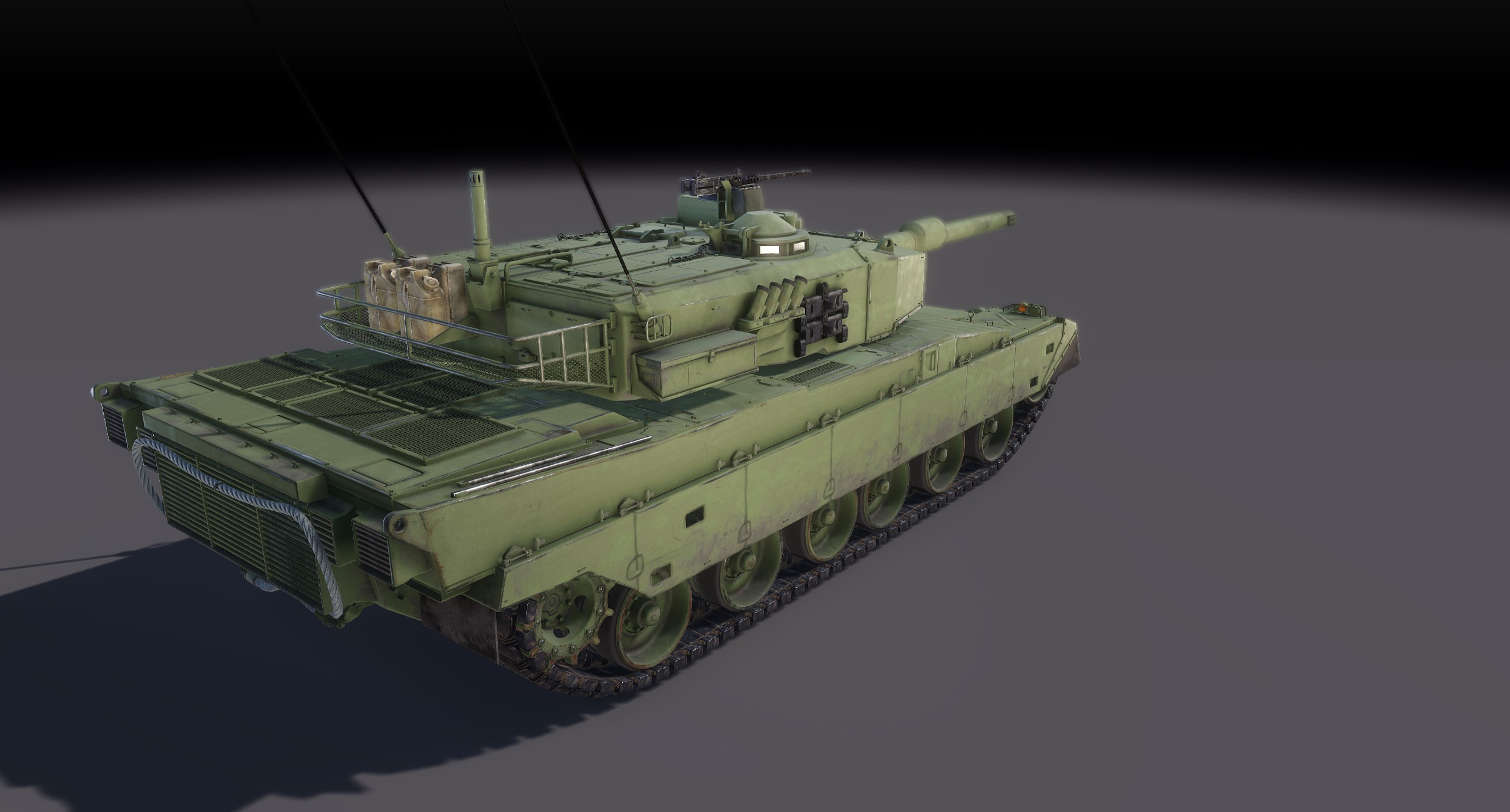
And, last but not least, there is the matter of firepower. As we stated before, the tank was armed with an automatically loaded license-produced version of the Rheinmetall L/44 smoothbore. The gun accuracy was ensured by a thermal sleeve and a muzzle reference system. The gun itself was fed by a bustle-mounted Mitsubishi automatic loading mechanism and was fully stabilized. Sixteen rounds of NATO standard 120mm ammunition were ready in the loader with more ammunition stored in the tank. The rate of fire was between 10 and 15 rounds per minute.
The tank’s Fire Control System consisted of Nikon optics, a Fujitsu thermal imager, a digital firing computer and a laser rangefinder. It was capable of automated target tracking, a highly advanced feature at the time – the FCS even continued to track the target if it disappeared out of sight based on its speed and direction. Additionally, the vehicle had a hunter killer capability with the commander designating a target while the gunner was engaging a different one.
Such complex and advanced features do come, however, with a hefty price tag. Nevertheless, the Japanese were prepared to invest in their military to give them the very best equipment obtainable in order to protect the homeland from the Soviet menace. And then the Soviet Union collapsed.
Any reader familiar with the previous Armored Warfare articles might have already guessed what happened next. Several rounds of budget cuts connected to the disappearance of an immediate threat slowed the production of this tank to a crawl and the Japanese were only gradually replacing the obsolete Type 74 and Type 61 tanks for almost two decades.
The Type 90 was produced in several batches between 1990 and 2009. The 341 built tanks were nowhere near enough to replace all the older machines in the SDF service. The ancient Type 61 tank was finally phased out in 2000, but the Type 74 continues to soldier on alongside the Type 90 with several hundred still in Japanese inventory. As for the Type 90 itself, the Type 10 MBT, commonly mentioned as its successor, is in fact not designed to replace it, but to complement it along with the remaining Type 74 tanks and, once again, the Type 10 is a costly vehicle with slow production rate. As a result, the Type 90 is expected to serve for many more years to come. With the tank only being used by the Japanese and not offered for export (partially due to a set of very strict weapons export laws), its service life is relatively uneventful – it is not expected to ever fire a shot in anger.
In Armored Warfare, the Type 90 will be a Tier 7 Premium Main Battle Tank. Gameplay-wise, it will resemble the Leopard 2 and Abrams version of the same Tier, being placed in power somewhere between the basic (stock) and elite versions of the said vehicles. The difference between the Leopard 2A5 and the Type 90 MBT lie in the presence of an automatic loading mechanism – otherwise, the firepower and protection levels will be roughly the same with the Japanese tank having a little less armor, compensated by more module hitpoints. Overall, it will not be the best-protected MBT on the battlefield, requiring careful long-range gameplay. The advanced electronics installed in this tank will, however, allow it to aim faster than all its class and Tier counterparts.
But the truly special feature of this tank that sets it apart from the others will be its hydropneumatic suspension. Using their mouse (just like regular aiming), the players will be able to tilt the vehicle forwards or backwards, significantly enhancing its gun depression or elevation and allowing it to take shots other tanks could not. Additionally, this tank has a special ability to lower itself to the ground much like the Object 279, reducing its silhouette. If this feature is engaged, the tank will lose some of its mobility and view range, but will gain additional camouflage bonus and the ability to aim faster. The hydropneumatic elevation and depression abilities are not available in this lowered setting.
Maximum gun elevation:
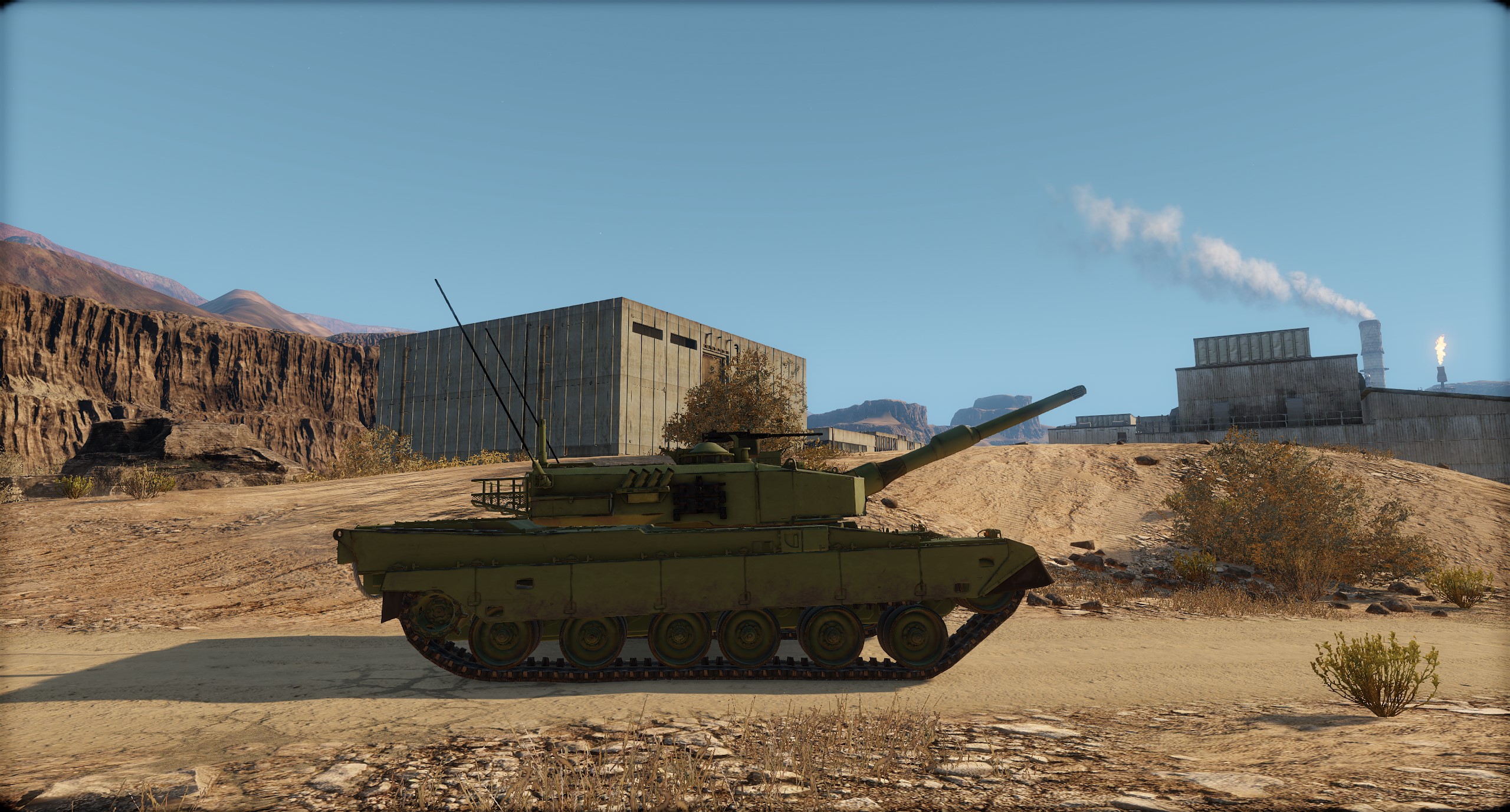
Maximum gun depression:
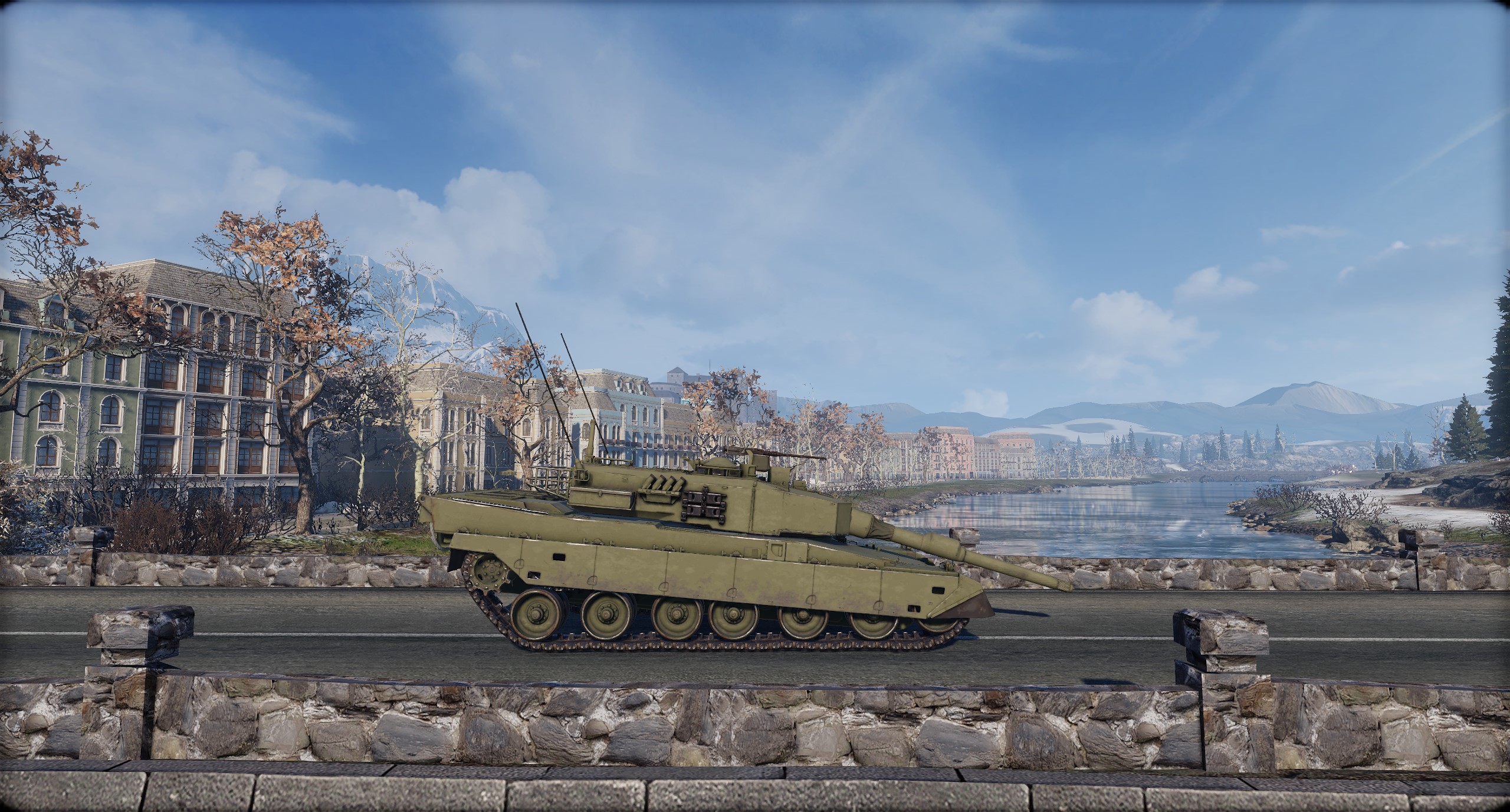
Hulldown mode:
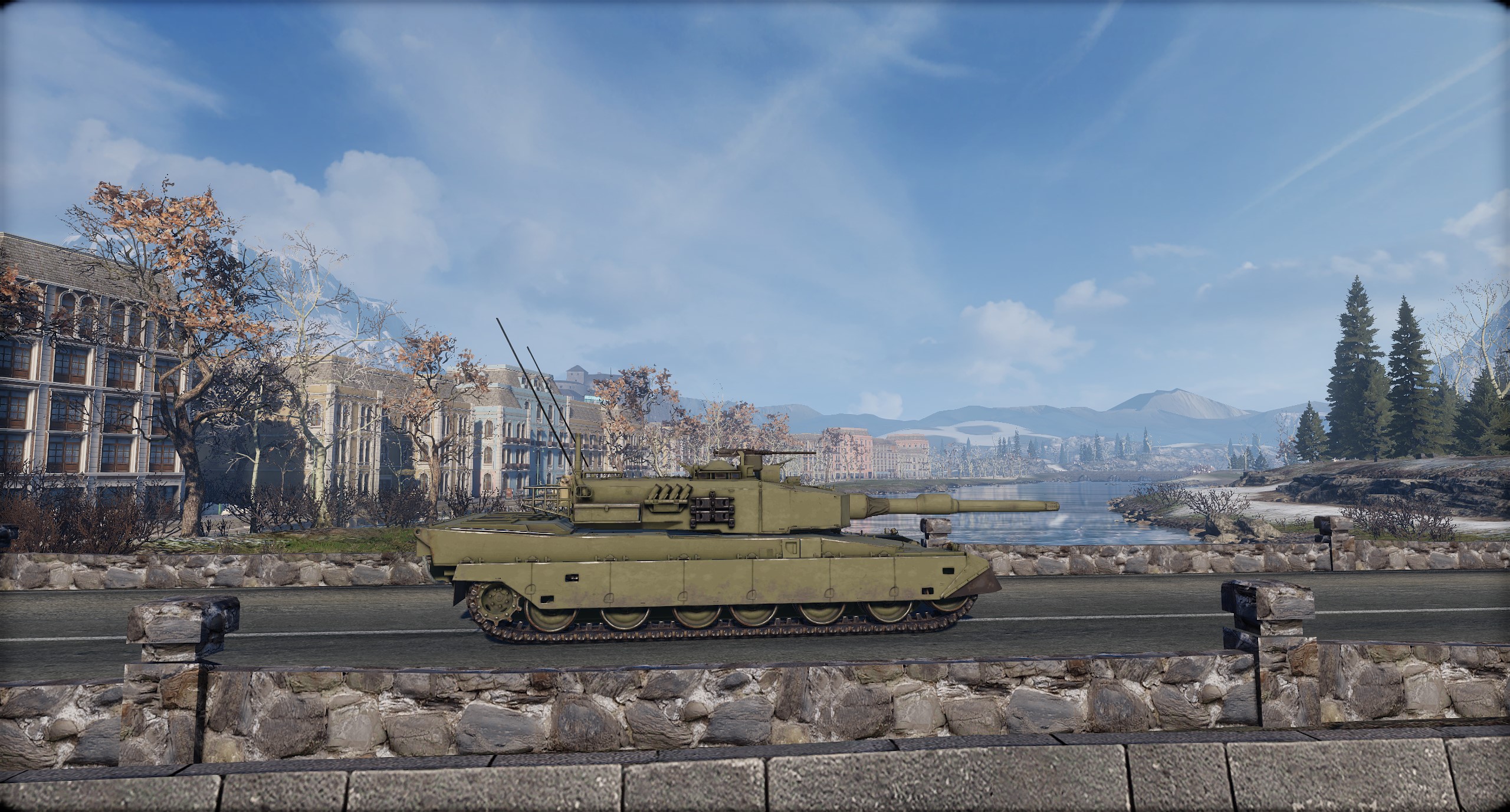
Precise tactical positioning will be the key to success with this tank.
We do hope you will enjoy it and will see you on the battlefield!





